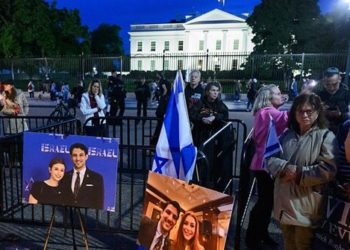Residents can now have their soil tested for lead around Eaton burn area, thanks to free county program
Residents in the Eaton burn area and downwind can now send in soil samples from their yard to test for...
Israeli NY Consul General: Killing of Embassy Staffers Thanks to Qatar’s Brainwashing on Campus
On Thursday’s broadcast of the Fox News Channel’s “America Reports,” Consul General of Israel in New York Ofir Akunis blamed the...
Sporty & Rich x adidas Originals Hit the Tennis Courts
Name: Sporty & Rich x adidas Originals ADIZERO ADIOS; Sporty & Rich x adidas Originals Blanc Colorway: White/Green Release Date:...
Trump takes new pages out of strongman’s playbook with Harvard crackdown and crypto gala
There are things almost all autocrats do. They discredit democratic election systems; they seek to delegitimize the judiciary and politicize...
‘Somos sobrevivientes’: el pueblo maya ixil sale en defensa de su territorio en Guatemala
LOS ÁNGELES — La comunidad en donde vive Concepción Santay Gómez ha sufrido diferentes invasiones. Este hombre de 58 años nació en...
Man, 31, in U.S. legally for 12 years ripped from family, detained by ICE
A 31-year-old Danish national with no criminal record who has been living in the U.S. legally for more than 10...
‘House of horrors’: Guntersville woman pleads guilty to animal cruelty after abandoning 19 cats in home
GUNTERSVILLE, Ala. (WHNT) — A woman who was accused of leaving nearly 20 cats abandoned in her home in March...
Judge Extends Order Blocking Trump’s Planned Mass Layoffs
A judge handed workers across a broad swath of the federal government a reprieve on Thursday night, extending her pause...
A Paris court will deliver the verdict in Kim Kardashian jewelry heist trial
PARIS (AP) — A decade after robbers stormed Kim Kardashian’s luxury residence and tied her up at gunpoint, a Paris...
Lauren Sánchez sparkles in sequined corset gown on amfAR Gala Cannes 2025 red carpet
Lauren Sánchez attended the amfAR Gala in Cannes on Thursday in a sparkling strapless gown. Dave Benett/amfAR/Getty Images for amfAR...

















